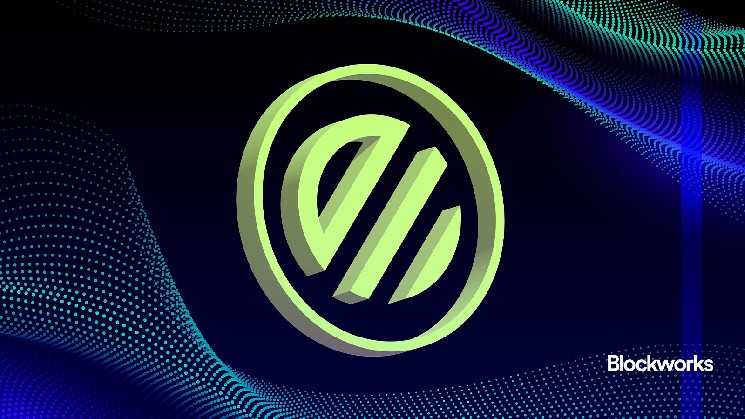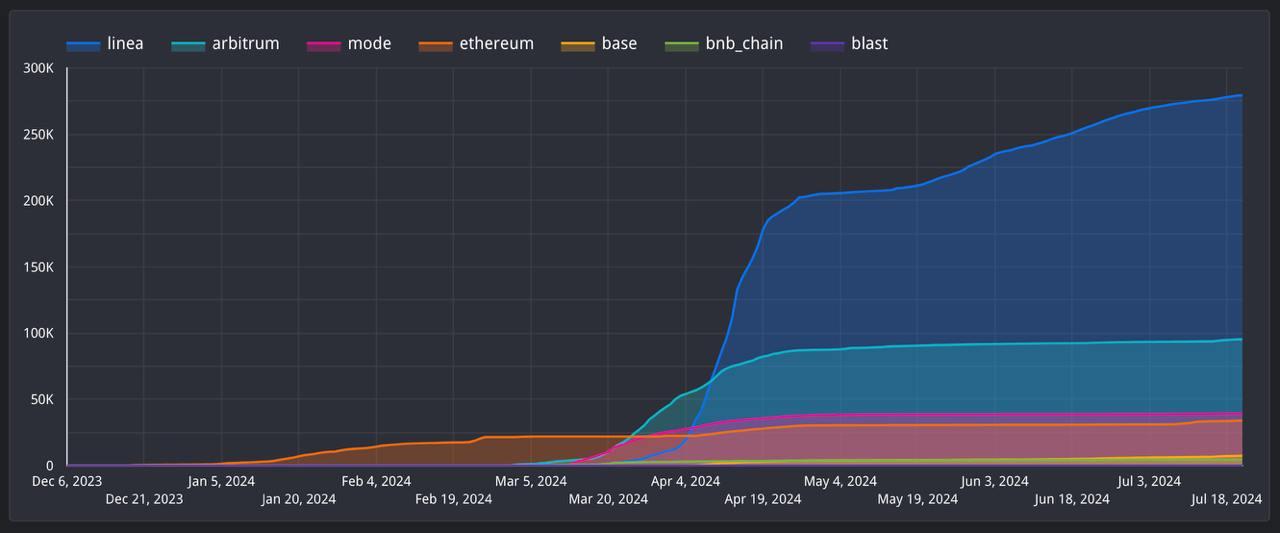Renzo restaking finds success in chain abstraction effort: Case study

As an increasing number of layer-2 chains compete today for user attention and liquidity, developer efforts are ramping up around “chain abstraction,” a broad term used to describe a seamless cross-chain user experience across all chains.
Fully implemented chain abstraction is still years away, though we have an early glimpse into what a chain-abstracted user experience looks like.
In partnership with Everclear (previously Connext), Renzo protocol sought to bring native restaking to six supported layer-2s: Arbitrum, BNB Chain, Base, Mode, Blast and Linea. Renzo is the third-largest liquid restaking protocol, with $1.2 billion in total value locked (TVL) today.
Read more: What was behind the run on Renzo’s liquid restaked ETH?
The goal was to let Renzo users restake from any of the aforementioned layer-2s to receive ezETH, thereby skirting the burden of bridging onto Ethereum mainnet and its high gas fees. In short, Renzo sought to meet users where they are, the entire point of “chain abstraction.”
The initiative sent Renzo’s TVL from $614 million at the end of February to over $1 billion three months later, according to a case study shared with Blockworks. The growth came despite a major depeg of Renzo’s LRT.

Renzo’s cumulative TVL across six layer-2s over time
Moreover, Renzo benefited from a tenfold increase in unique EOAs (wallet addresses), while seeing an estimated 90% reduction in gas fees.

Renzo’s number of unique EOAs per chain over time
The initiative also allowed layer-2 chains to retain liquidity within their own ecosystems.
From a user’s perspective, complex bridging was abstracted away. ETH could be conveniently restaked from the chosen layer-2 to receive Renzo’s liquid restaking token ezETH.
From Renzo’s perspective, ETH staked by users on any of the layer-2 chains were batched and bridged to Ethereum mainnet on Everclear’s “Clearing Layer” — a settlement liquidity layer where third-party “solvers” compete to process users’ transactions.
Other players such as Socket Network are developing similar intent-based interoperability solutions to tackle chain abstraction.
Socket’s modular order flow auctions marketplace — or MOFA — employs a similar market-based model where execution agents (transmitters) compete to process the right to execute users’ transactions.
Socket co-founder Vaibhav Chellani said: “It’s entirely up to MOFA transmitters as to how they will execute users’ transactions. They could use any choice of bridge, or even fund it from their personal wallet.”
While there are dozens of players competing to create the best chain abstraction interoperability solution, Chellani stressed that most of these efforts are purely synergistic to Socket. “We see shared sequencers, Polygon’s AggLayer or Optimism’s Superchain as pipes that we leverage from MOFA to do cross-chain settlement.”
Applications’ go-to-market strategies are no longer confined by the costs and engineering challenges of multiple cross-chain deployment.
On the other hand, the target market of layer-2s expands beyond the silos of their own ecosystem, all while retaining composability.
These efforts provide an early look into what chain abstraction in its end state could look like, under different incentives.




 Bitcoin
Bitcoin  Ethereum
Ethereum  Tether
Tether  USDC
USDC  Dogecoin
Dogecoin  TRON
TRON  Cardano
Cardano  Stellar
Stellar  Chainlink
Chainlink  Hedera
Hedera  Bitcoin Cash
Bitcoin Cash  Litecoin
Litecoin  LEO Token
LEO Token  Monero
Monero  Cronos
Cronos  Dai
Dai  Ethereum Classic
Ethereum Classic  OKB
OKB  Algorand
Algorand  VeChain
VeChain  Cosmos Hub
Cosmos Hub  Gate
Gate  KuCoin
KuCoin  Stacks
Stacks  Tezos
Tezos  Theta Network
Theta Network  IOTA
IOTA  Tether Gold
Tether Gold  Zcash
Zcash  TrueUSD
TrueUSD  NEO
NEO  Polygon
Polygon  Decred
Decred  Dash
Dash  Ravencoin
Ravencoin  Qtum
Qtum  Basic Attention
Basic Attention  Zilliqa
Zilliqa  0x Protocol
0x Protocol  Synthetix Network
Synthetix Network  Holo
Holo  Siacoin
Siacoin  DigiByte
DigiByte  Enjin Coin
Enjin Coin  Ontology
Ontology  Nano
Nano  Status
Status  Hive
Hive  Waves
Waves  Lisk
Lisk  Steem
Steem  Numeraire
Numeraire  Pax Dollar
Pax Dollar  BUSD
BUSD  Huobi
Huobi  NEM
NEM  OMG Network
OMG Network  Bitcoin Gold
Bitcoin Gold  Ren
Ren  Bitcoin Diamond
Bitcoin Diamond  Augur
Augur